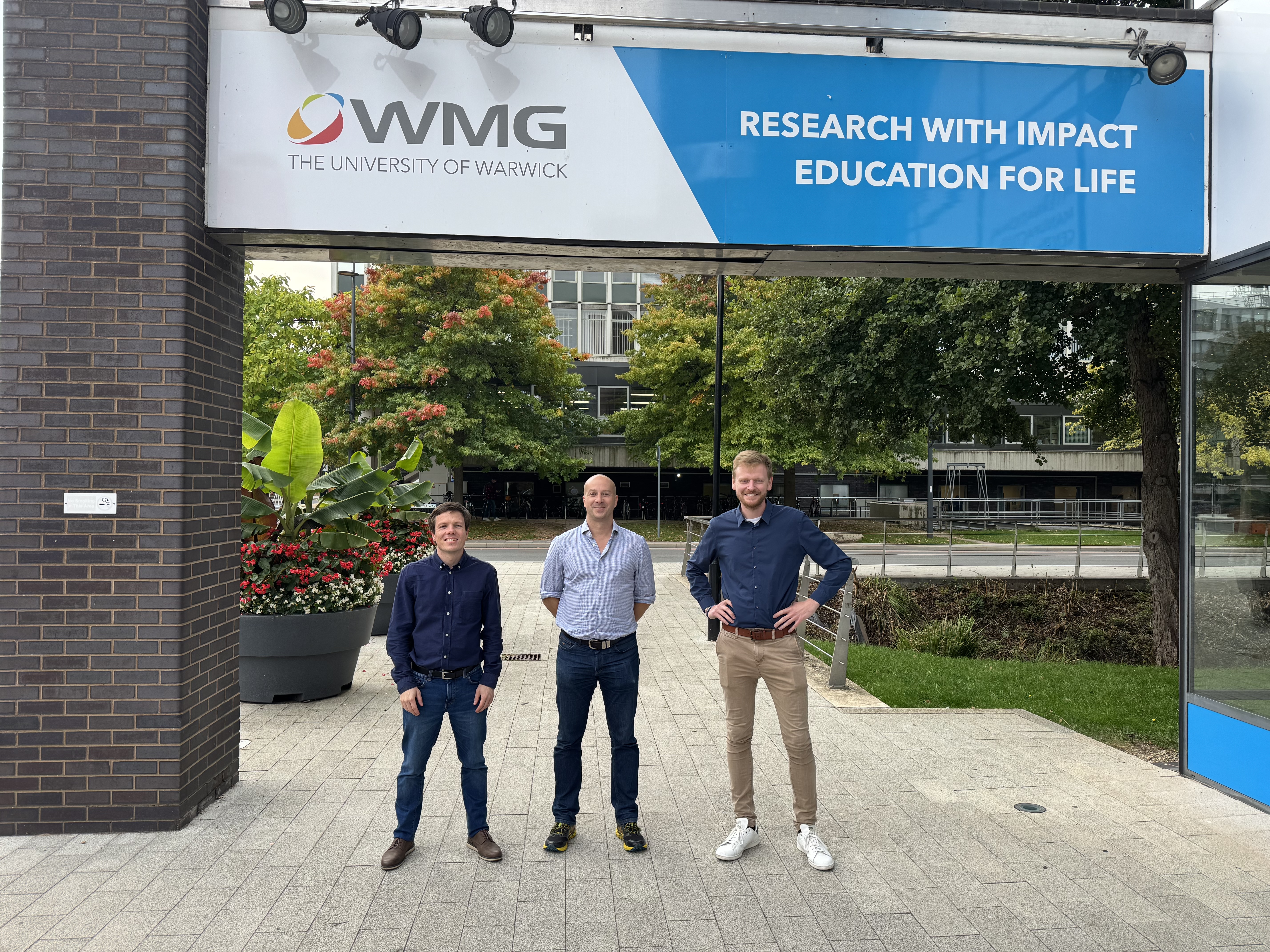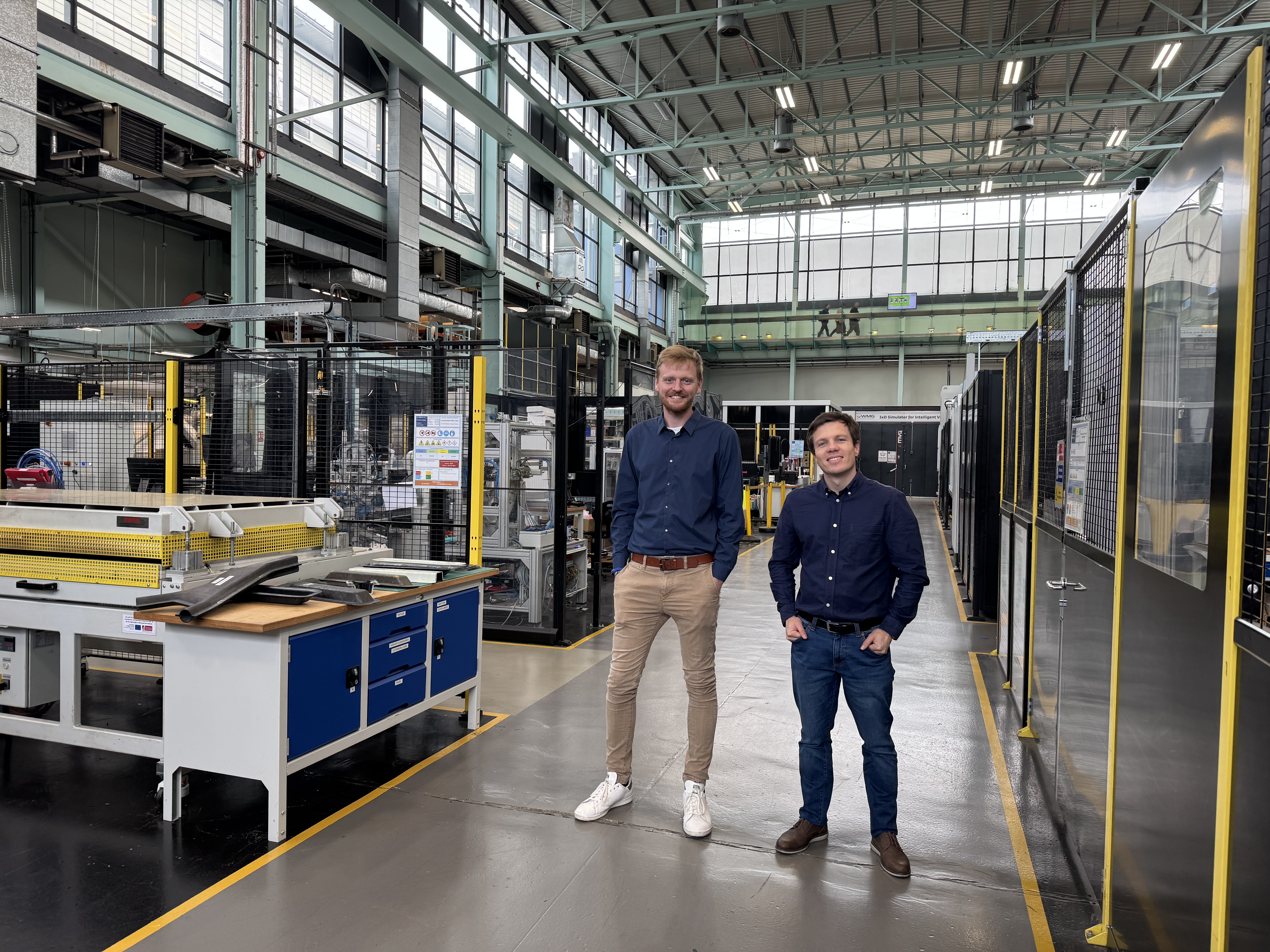Building bridges between South Africa and the UK for a hydrogen-powered future
The Stellenbosch University’s H₂GEN, which operates under the Centre for Renewable and Sustainable Energy Studies (CRSES), represented by Paul Thiele (Research Assistant / Hydrogen Engineering Platform Manager) and Dr Gerrit Ter Haar (Postdoctoral research fellow), recently visited the University of Warwick from 01- 02 October 2025. They were hosted by Dr James Meredith (Chief Engineer, Warwick Manufacturing Group , University of Warwick), the visit explored collaboration opportunities in hydrogen technology under the Stellenbosch–Warwick Joint Seed Fund, which is aimed at strengthening research ties between South Africa and the United Kingdom.
 The first day of the visit focused on discovering shared research interests. Researchers from both institutions presented their current work in hydrogen and energy technologies. Stellenbosch University showcased the breadth of research activities within H₂GEN, while colleagues from Warwick introduced several impressive projects. Dr James Meredith provided an overview of activities within the Warwick Manufacturing Group (WMG), highlighting its leadership in applied research and industrial partnerships. Professor Stuart Coles (Associate Dean, Research, WMG) shared his team’s work on sustainable materials and industrial decarbonisation, with a strong focus on Life Cycle Assessment and microbial electrolysis cells for hydrogen production. His group’s innovative approach to chemical recycling and evaluating the environmental impact of hydrogen systems revealed exciting collaboration opportunities.
The first day of the visit focused on discovering shared research interests. Researchers from both institutions presented their current work in hydrogen and energy technologies. Stellenbosch University showcased the breadth of research activities within H₂GEN, while colleagues from Warwick introduced several impressive projects. Dr James Meredith provided an overview of activities within the Warwick Manufacturing Group (WMG), highlighting its leadership in applied research and industrial partnerships. Professor Stuart Coles (Associate Dean, Research, WMG) shared his team’s work on sustainable materials and industrial decarbonisation, with a strong focus on Life Cycle Assessment and microbial electrolysis cells for hydrogen production. His group’s innovative approach to chemical recycling and evaluating the environmental impact of hydrogen systems revealed exciting collaboration opportunities.
Dr Lukasz Figiel (Reader, Materials Engineering, WMG) demonstrated how advanced artificial intelligence and mathematics-based modelling are being applied to address hydrogen permeation in polymers, a key challenge for hydrogen storage and transport. His team has developed specialised testing rigs capable of withstanding high-pressure conditions, supporting research into safer and more reliable hydrogen infrastructure. Dr Jisun Im (Assistant Professor, School of Engineering) discussed her research on photoelectrochemical water splitting, which encompasses everything from nanomaterial design to full system integration for green hydrogen production. Dr Peimiao Zou (Postdoc, School of Engineering) presented her research on zinc-air batteries, catalysts, fuel cells, and electrolysers, including promising findings on solid oxide fuel cells.
The second day offered a closer look at Warwick’s impressive research facilities.

The team toured the Energy Innovation Centre, one of the United Kingdom’s largest and most comprehensive battery research hubs, which integrates every stage of development from materials and electrochemistry to system applications and recycling. They also visited the Centre for Imaging, Metrology and Additive Technologies (CiMAT), home to some of the most advanced X-ray CT scanners in the country. This facility enables ultra-high-resolution imaging and dynamic 4D scanning of complex materials, supported by world-class 3D printing technologies that can get essential for designing and testing hydrogen components.
Further tours included Warwick’s catalyst production and materials research facilities at the School of Engineering, where the Centre for Experimental Fuel Technologies integrates electrochemistry, materials science, and fuel cell engineering. A highlight of the visit was the “Waste2Race” hydrogen-powered racing car, a tangible example of how Warwick translates hydrogen research into real-world innovation and mobility solutions.
The visit underscored strong complementary expertise between Stellenbosch University and University of Warwick. Shared research interests include solar hydrogen production, the development of affordable non-precious metal catalysts, hydrogen storage and transport systems suited to African conditions, and collaborative training opportunities for students and researchers.
Moving forward, the two institutions are developing concrete next steps, including the exchange of training programs, joint project proposals, and a reciprocal visit to Stellenbosch University. The teams are also exploring funding opportunities through the UK–South Africa research partnerships and the Clean Hydrogen Partnership.

This collaboration marks an important milestone in advancing hydrogen research across continents. By combining Warwick’s advanced characterisation and testing expertise with Stellenbosch’s applied research and African field experience, both institutions are well-positioned to drive impactful innovation toward a sustainable, hydrogen-powered future.


